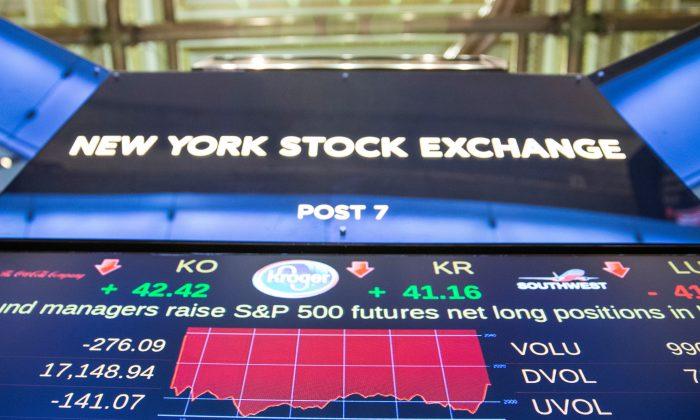Analysts expect a better year for stocks in 2016 than in 2015 with more compelling opportunities in Europe and Asia versus the U.S.
That may be hard to believe given the first few trading days of 2016. Risk factors like China’s uncertain economic transition and renewed geopolitical tensions raised their ugly heads. And the Fed is on a trajectory of raising rates.
Market volatility is on the way up—to a more normal level of risk. It’s part and parcel of the Fed providing less support to the economy. But market volatility and interest rates are still near historical lows.
RBC Wealth Management equity analyst Alan Robinson sees some decent upside to the stock market notwithstanding the selloff to start the year.
“The situation’s changed, but it hasn’t changed dramatically enough for us to change our view that we’re still in a secular bull market for stocks,” Robinson told Epoch Times.
Given the 2.6 percent loss in the S&P 500 to start 2016 (as of Jan. 6), it now has a hill to climb to turn positive for the month. RBC notes that since 1901, the performance in the month of January determined the direction of the market for the entire year 73 percent of the time.
“We see this global bull market [that began in March 2009] as tired and old, but not finished,” said Citi in its 2016 outlook for equities.
Coming out of a debt-induced stock market crash, subsequent rallies tend to be more elongated.
And the likelihood of a U.S. recession appears to be low, though some warning signs are being noted. Citi notes those signs are not as bad as in 2000 or 2007. The rise in U.S. high-yield bond spreads has historically been telling, but with the U.S. yield curve still upward sloping, a recession seems unlikely.
Robinson adds that given the health of the U.S. consumer, it’s hard to see a recession on the horizon. He’s also looking for a pickup in wages as the employment picture brightens.
Europe and Japan
Globally, stocks look compelling when compared to bonds. Citi notes the MSCI World Index offers a 2.6 percent yield, which is roughly 0.40 percent higher than the U.S. 10-year bond yield. The biggest premiums relative to local bonds are to be found in Continental Europe and Japan.Other reasons to prefer Continental Europe and Japan are decent earnings momentum and ongoing central bank support. With rising Fed funds, Citi is less optimistic about the U.S.
While Robinson worries that this is a consensus view, the mechanism whereby Europe outperforms is by catching up to the U.S. in corporate operating margins.
“European companies tend to have higher fixed costs than U.S. companies and so they do worse in downturns, but tend to perform better in upturns because more of their revenue is automatically taken to the bottom line,” explains Robinson. Any gains in U.S. markets will really come from revenue growth rather than profitability growth.
Japanese stocks look compelling on a book value basis, and RBC believes a looming pickup in capital expenditures will prop up that market. Compared to the U.S. and Europe, Japan’s 12-month forward price/earnings ratio as compared to its 10-year median has more upside.
There is much less uncertainty about the U.S. growth outlook, which gives its equities a richer valuation, David Rosenberg, chief strategist and economist at Gluskin Sheff + Associates told Bloomberg Canada TV.
“In the land of the blind, the one-eyed man is king. And you could argue that the U.S. is still the one-eyed man in that respect,” said Rosenberg.
Year-End 2016
Citi, J.P. Morgan, and RBC all have a 2,200 target or 8 percent gain in 2016 for the S&P 500.“Surprise would be not necessarily a much worse performance than that, but perhaps a better performance than that,” says Robinson. He feels that, coming off a flat 2015 and better understanding of the disruption in the energy sector, there is more scope for a positive surprise in 2016.
His “swing for the fences” opportunity in 2016 is to go long the energy sector. He believes there will be a time to do that if oil supply and demand come back into balance. But he warns that trade is “not for widows and orphans.”







Friends Read Free